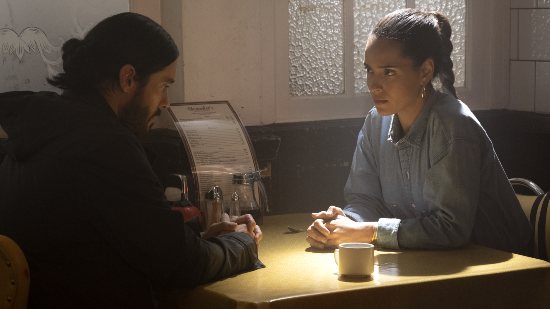Morbius Is Shared Universe Filmmaking at Its Least Compelling
Another non-Spider-Man movie serves shareholders and leaves behind young viewers

I’m not here to talk about the fact that Morbius kinda sucked, and not in the way you hope a vampire movie sucks. Much ink has been spilled about that, including some of it here at Paste about what this means for the ongoing Spider-Man movie experiment. Those of us who watch the film industry (God help us) have to wonder about stuff like that, because it’s going to affect the next however many years of our moviegoing habits in one way or another. For those who watch films, or those who are beginning their journey to loving film, I wonder what, if anything, Morbius makes them wonder about.
Because the weather over my featureless stretch of the Midwest has finally mellowed enough to allow it (and because I still don’t go to movie theaters), I saw Morbius at a drive-in theater in a double feature with Spider-Man: No Way Home. And because it’s always good to give her a chance to get out of the house and away from her three siblings, I brought along my 13-year-old, whose opinions on tentpole features always elucidate something for me. As we settled in for a good five-hour stretch at the picture show with smuggled fast food hiding under our coats, she told me she’d seen incessant ads for Morbius but knew jack shit about it.
I told her a little about what I knew of Morbius the character, which is not much: He was a vampire guy on the Spider-Man animated show I watched in the ’90s when I was younger than her. She hid during the gross parts. We talked about how the scene aboard the ship where Jared Leto’s physically disabled main character goes full vamp for the first time felt like maybe it was edited out of a completely different cut of the movie. (Adria Arjona’s love interest character bursting back to life in the last scene—in a shot that had nothing to do with anything else, with no reaction from or denouement with the title character—seems like a pretty obvious reshoot to respond to somebody’s sour-grapes reaction to something, somewhere.)

And then there are the two scenes the movie is actually there to support, which occur…during the credits. The movie surrounding them is akin to a temple built only to house a reliquary (or, perhaps, launder money). In the first, we see Michael Keaton in a prison cell for some reason, and then learn that he is… not in his original timeline? There’s a news story about it, presumably because having a newscaster explain stuff to the audience is fairly easy. We are made to understand that this is Keaton’s character from Spider-Man: Homecoming. In an additional post-credits sequence, Morbius meets with Keaton and drops Spider-Man’s name completely out of nowhere. We are meant to feel something here.
-

-

-

-

-

-

-

-

-

-

-

-

-

-

-

-

-

-

-

-

-

-

-

-

-

-

-

-

-

-

-

-

-

-

-

-

-

-

-

-









































